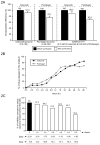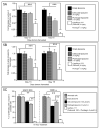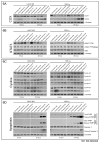Nanoparticle-Based Celecoxib and Plumbagin for the Synergistic Treatment of Melanoma
- PMID: 28003325
- PMCID: PMC5821064
- DOI: 10.1158/1535-7163.MCT-16-0285
Nanoparticle-Based Celecoxib and Plumbagin for the Synergistic Treatment of Melanoma
Abstract
Using multiple drugs to kill cancer cells can decrease drug resistance development. However, this approach is frequently limited by the bioavailability and toxicity of the combined agents and delivery at ratios to specific locations that synergistically kill cancer cells. Loading the individual agents into a nanoparticle that releases the drugs at synergizing ratios at a single location is one approach to resolve this concern. Celecoxib and plumbagin are two drugs that were identified from a screen to synergistically kill melanoma cells compared with normal cells. Combined use of these agents by traditional approaches was not possible due to poor bioavailability and toxicologic concerns. This study details the development of a nanoliposomal-based agent containing celecoxib and plumbagin, called CelePlum-777, which is stable and releases these drugs at an optimal ratio for maximal synergistic killing efficacy. CelePlum-777 was more effective at killing melanoma than normal cells and inhibited xenograft melanoma tumor growth by up to 72% without apparent toxicity. Mechanistically, the drug combination in CelePlum-777 led to enhanced inhibition of melanoma cell proliferation mediated by decreasing levels of key cyclins important for cancer cell proliferation and survival, which was not observed with the individual agents. Thus, a novel nanoparticle-based drug has been developed containing celecoxib and plumbagin that lacks toxicity and delivers the agents at a synergistically killing drug ratio to kill cancer cells. Mol Cancer Ther; 16(3); 440-52. ©2016 AACR.
©2016 American Association for Cancer Research.
Conflict of interest statement
Figures






References
-
- Buckley ST, Frank KJ, Fricker G, Brandl M. Biopharmaceutical classification of poorly soluble drugs with respect to “enabling formulations”. European journal of pharmaceutical sciences : official journal of the European Federation for Pharmaceutical Sciences. 2013;50:8–16. - PubMed
-
- Jia J, Zhu F, Ma X, Cao Z, Li Y, Chen YZ. Mechanisms of drug combinations: interaction and network perspectives. Nature reviews Drug discovery. 2009;8:111–28. - PubMed
Publication types
MeSH terms
Substances
Grants and funding
LinkOut - more resources
Full Text Sources
Other Literature Sources

